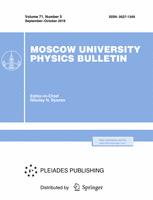The effect of an electrostatic field on internal friction and the defect in Young's modulus in the kilohertz range of frequencies is studied by means of two- and three-component resonance oscillators. It is estab- lished that in the range of amplitudes 10$^{-6}$ - 10$^{-4}$, the electrostatic field affects internal friction and the defect of Young's modulus. The height of the internal friction maxima observed in this range of deformation amplitudes increases under the influence of the electrostatic field, the maxima shift into the region of lower deformation amplitudes, and other maxima appear which are not present in the absence of the electrostatic field. The effect of the electrostatic field on the defect in Young's modulus manifests Itself in an increase in the absolute size of the defect as well as in a variation in the course of the dependence of the defect of Young's modulus on time and deformation amplitude. From an analysis of the internal friction and defect results, it is concluded that an electrostatic field leads to a growth in the amplitude of the oscillations of the dislocation segments and an increase in the number of active dislocations contributing to internal friction.
Moscow State University, Leninskie Gory, Moscow, 119992, Russia



